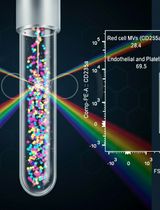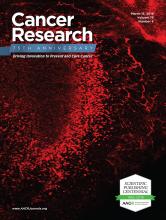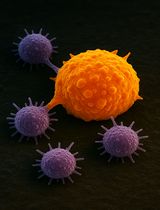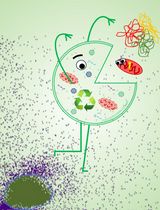- EN - English
- CN - 中文
Osteoblast Sorting and Intracellular Staining of CXCL12
成骨细胞分选和CXCL12的细胞内染色
发布: 2018年05月20日第8卷第10期 DOI: 10.21769/BioProtoc.2858 浏览次数: 7500
评审: Nicoletta CordaniAbhijit KaleAnonymous reviewer(s)

相关实验方案

外周血中细胞外囊泡的分离与分析方法:红细胞、内皮细胞及血小板来源的细胞外囊泡
Bhawani Yasassri Alvitigala [...] Lallindra Viranjan Gooneratne
2025年11月05日 1329 阅读
Abstract
Osteoblasts are bone marrow endosteum-lining niche cells playing important roles in the regulation of hematopoietic stem cells by secreting factors and cell adhesion molecules. Characterization of primary osteoblasts has been achieved through culture of outgrowth of collagenase treated bone. Immunophenotyping and flow-based analysis of long bone osteoblasts offer a simplified and rapid approach to characterize osteoblasts. We describe a modified procedure of isolating mouse bone marrow osteoblastic cells based on cell surface immunophenotyping. The chemokine CXCL12 (also known as stromal-derived factor, SDF-1) together with its receptor CXCR4 are expressed by osteoblasts and bone marrow stroma cells. The CXCL12-CXCR4 axis is important for hematopoietic stem cell retention to their niches (Sugiyama et al., 2006) and for supporting leukemia initiating cell activity (Pitt et al., 2015). Here we describe the procedure of intracellular staining of CXCL12.
Keywords: Bone marrow niche (骨髓微环境)Background
The bone marrow niche is a highly organized microenvironment with stroma cells that engage in direct cell-cell interaction with hematopoietic stem cells (HSC) that regulate HSC quiescence, differentiation, and mobilization (Anthony and Link, 2014; Mendelson and Frenette, 2014; Morrison and Scadden, 2014). Multiple cell types in HSC niche may contribute to niche functional support in distinct but maybe overlapping ways. These cells include but are not limited to osteoblasts, osteoclasts, CXCL12-abundant reticular (CAR) cells, Nestin+ stroma cells, leptin receptor+ (LepR+) stroma cells, endothelial cells, macrophages, megakaryocytes, neuronal, and the non-myelinating Schwann cells. Most HSCs are found in the trabecular region of bone marrow, suggesting an important HSC supporting role of the endosteum as well as factors made by osteoblasts and other cells in the endosteum (Kiel et al., 2005; Lo Celso et al., 2009). The majority of long-term HSCs are located in close vicinity of the sinusoid in close contact with LepR+ and CXCL12high niche cells, indicating a perivascular niche composed by endothelial or perivascular cells (Kiel et al., 2005; Sugiyama et al., 2006; Acar et al., 2015). In addition to the perivascular niche associated with sinusoid, mesenchymal cells that surround arterioles in the bone marrow are also important for the maintenance of quiescent HSCs (Kunisaki et al., 2013). Osteoblasts are specialized endosteum-lining cells that are terminally differentiated products of mesenchymal stem cells. Characterization of murine primary osteoblasts has been achieved through culture of outgrowth of collagenase treated bone and retrospective functional analysis (Bakker and Klein-Nulend, 2011). However, culture-based analysis has been complicated by the heterogeneity of the tissue. Immunophenotyping of murine osteoblasts based on defined CD markers is a rapid and prospective approach of phenotypic analysis of osteoblasts in various disease processes. Isolated osteoblasts through flow-based sorting are especially suitable for downstream applications such as gene expression analysis.
The chemokine CXCL12 (also known as stromal-derived factor, SDF-1) together with its receptor CXCR4 are highly expressed by CAR cells but also by osteoblasts and endothelial cells. The CXCL12-CXCR4 axis is important for hematopoietic stem cell retention to their niches (Sugiyama et al., 2006). CXCL12 in the vascular niche has also been shown play a critical role in supporting leukemia-initiating cell (LIC) activity (Pitt et al., 2015). Using a mouse T-ALL model, we reported that leukemia development was accompanied by the drastic suppression of the endosteum-lining osteoblast population. We further showed that aberrant Notch activation negatively regulates the expression of CXCL12 and osteoblastic progenitor differentiation. Here we describe the procedure of sorting mouse bone marrow osteoblastic cells and the procedure of staining intracellular CXCL12 (Wang et al., 2016).
Materials and Reagents
- Gauze sponges (Fisher Scientific, FisherbrandTM, catalog number: 22-415-468 )
- 21 G needles
- 3 ml syringes
- 70 μm strainer (Fisher Scientific, FisherbrandTM, catalog number: 22-363-548 )
- 1.5 ml microcentrifuge tube (NEST Biotechnology, catalog number: 615601 ), 15 ml tubes (BioExpress, GeneMateTM, catalog number: C-3394-1 ), and 50 ml conical tubes (BioExpress, GeneMateTM, catalog number: C-3394-4 )
- Other antibodies:
APC-anti-CD31 (Thermo Fisher Scientific, eBioScienceTM, catalog number: 17-0311-82 )
PE-anti-CD51 (BD, BD PharmingenTM, catalog number: 551187 )
PE-Cy7-anti-CD45 (BD, BD PharmingenTM, catalog number: 552848 )
Biotin-Sca1 (BD, BD PharmingenTM, catalog number: 553334 )
Streptavidin APC-Cy7 (BD, BD PharmingenTM, catalog number: 554063 ) - CXCL12 detection antibodies: H/M CXCL12/SDF-1 Fluorescein (FITC) MAb (Clone 79018) (R&D Systems, catalog number: IC350F )
- 70% (v/v) ethanol
- Hank’s Balanced Salt Solution (HBSS; 1x) (GE Healthcare, HycloneTM, catalog number: SH30588.02 )
- BSA (Sigma-Aldrich, catalog number: A7906 )
- Type I collagenase (Worthington, Lakewood, NJ)
- DMEM (ATCC®, catalog number: 30-2002TM )
- Fixation/Permeabilization Solution Kit with BD GolgiStopTM (BD, BD Cytofix/Cytoperm™ Plus, catalog number: 554715 )
- HBSS staining buffer (see Recipes)
Equipment
- Pipettes
- Scissors
- Tweezers
- Curved forceps
- Tabletop centrifuge (SORVALL Legend RT)
- Hemocytometer
- FACSAria I
Procedure
文章信息
版权信息
© 2018 The Authors; exclusive licensee Bio-protocol LLC.
如何引用
Wang, W., Majhail, G., Lui, C. and Zhou, L. (2018). Osteoblast Sorting and Intracellular Staining of CXCL12. Bio-protocol 8(10): e2858. DOI: 10.21769/BioProtoc.2858.
分类
干细胞 > 成体干细胞 > 造血干细胞
细胞生物学 > 细胞染色 > 细胞壁
细胞生物学 > 基于细胞的分析方法 > 流式细胞术
您对这篇实验方法有问题吗?
在此处发布您的问题,我们将邀请本文作者来回答。同时,我们会将您的问题发布到Bio-protocol Exchange,以便寻求社区成员的帮助。
Share
Bluesky
X
Copy link










